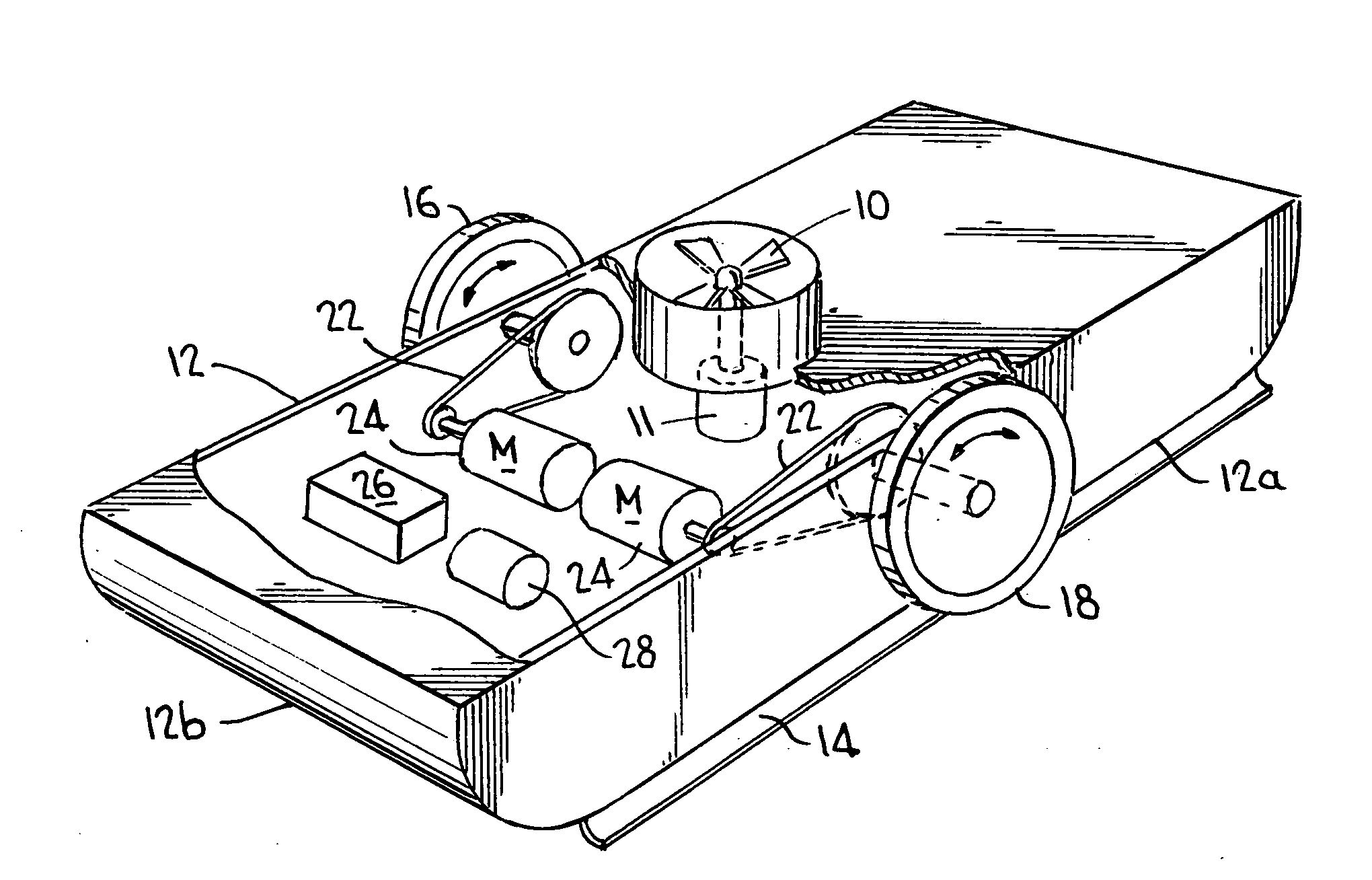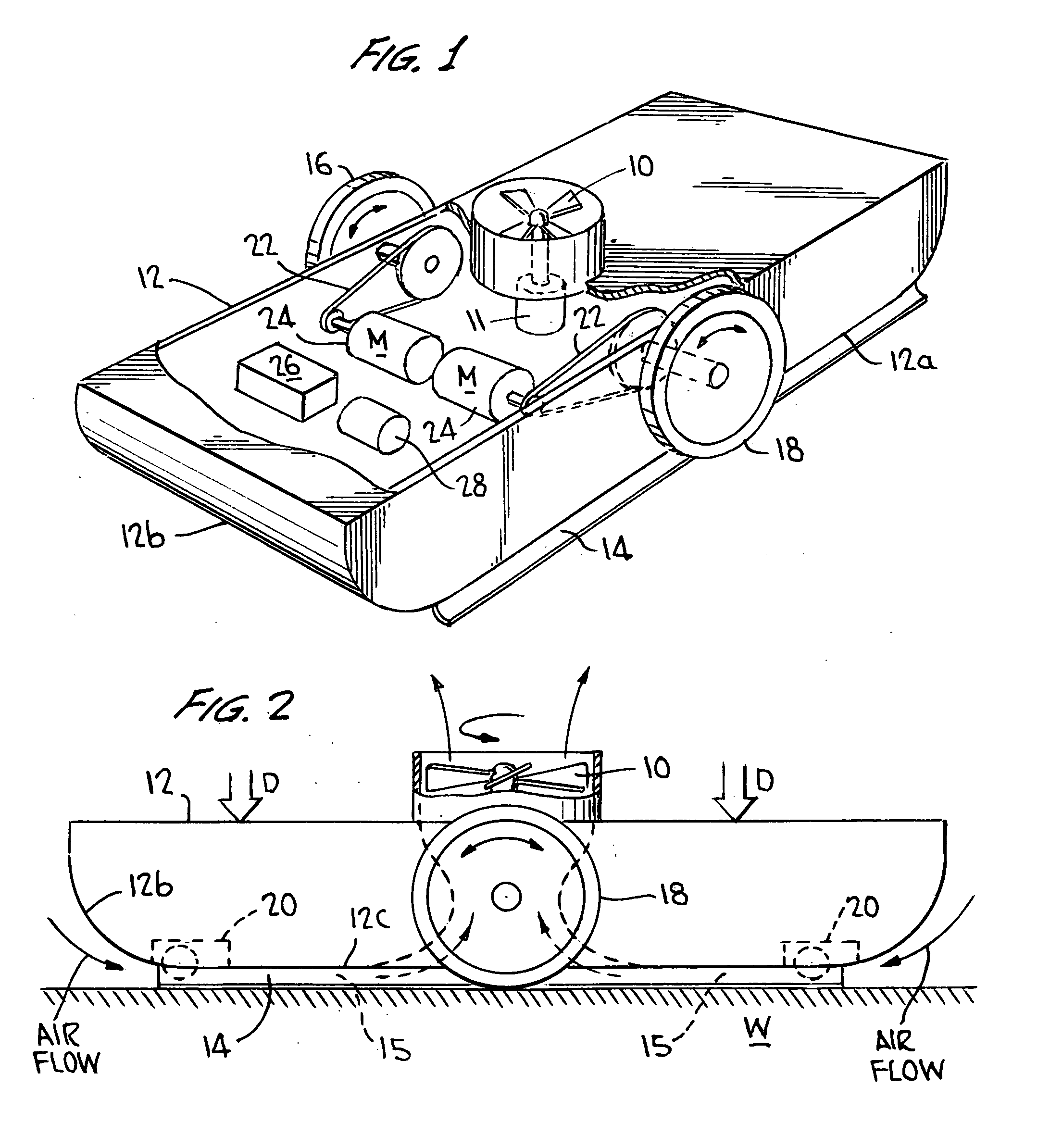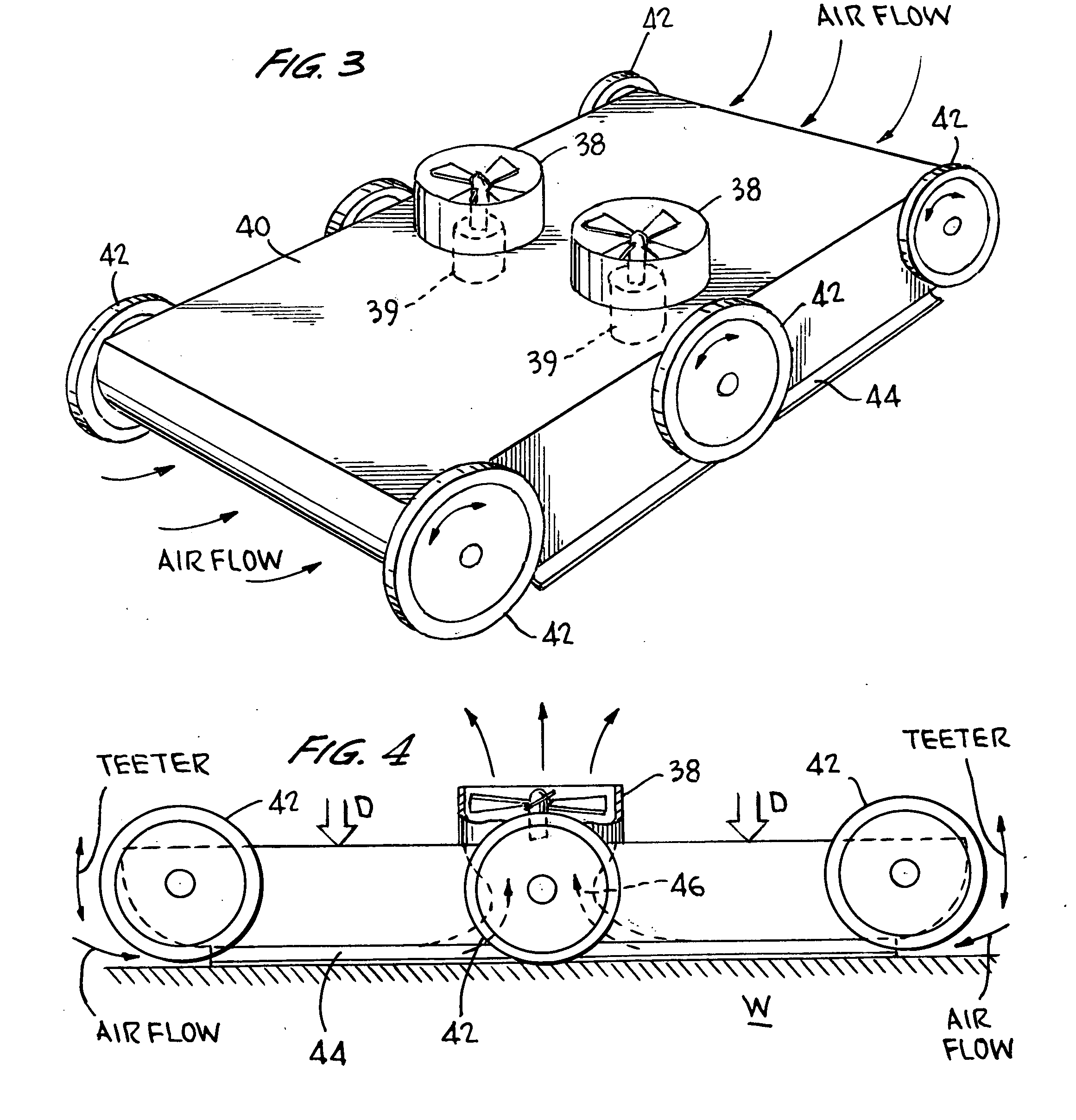Wall racer toy vehicles
a toy vehicle and wall race technology, applied in the direction of toys, remote control toys, vehicle components, etc., can solve problems such as difficulty in providing workable vehicles
- Summary
- Abstract
- Description
- Claims
- Application Information
AI Technical Summary
Benefits of technology
Problems solved by technology
Method used
Image
Examples
first embodiment
[0020]For example, FIGS. 1 and 2 show respectively a perspective and an elevation in partial cross-section of the Wall Racer, which as noted is generally elongated and could readily be fitted with a model race car or other vehicle body (not shown). As mentioned above, in order that downforce urging the Wall Racer against an abutting surface W (hereinafter simply “the wall”) can be developed, a high velocity stream of air is induced to flow in an underbody venturi duct formed between the undersurface of the chassis of the Wall Racer and the wall W. According to Bernouilli's Principle, as above, such a high velocity stream of air will be of reduced pressure with respect to the ambient air. The differential between this reduced pressure and the surrounding atmospheric pressure generates a resultant force D, termed “downforce” where, as here, its direction is such as to urge the vehicle “downwardly” toward the wall W. The amount of downforce D developed is proportional to the area over ...
third embodiment
[0024]By comparison, in the generally circular third embodiment of the Wall Racer shown in FIGS. 8 and 9 (discussed further below) a substantial distance exists between all points on the outer periphery of the undersurface of its chassis and the centrally-located exhaust duct, so that the airflow in this embodiment is radially inwardly from all directions, the downforce is developed uniformly around the chassis, and no skirts need to be fitted.
[0025]As noted, the differential in pressure and thus the downforce developed is a function of the air velocity, which up to a point can be increased by reducing the cross-sectional area of the duct formed between the underside of the chassis and the wall W, that is, by reducing the ground clearance of the Wall Racer. However, if the cross-sectional area is reduced too much, turbulence will impede flow and reduce the desired effect; reducing the ground clearance would also increase the Wall Racer's sensitivity to surface irregularities and the...
second embodiment
[0029]FIGS. 3 and 4 show the Wall Racer; this embodiment appears likely to correspond to the earliest production version of the Wall Racer. FIG. 12 provides detailed dimensional information concerning this embodiment, and preproduction specifications are provided below as well.
[0030]As shown by FIG. 3, in this embodiment two exhaust fans 38 are provided, spaced laterally from another on the transverse centerline of the chassis 40, and each fan being driven by a motor 39 with the fan mounted directly on the motor shaft. Six drive wheels 42 are provided, three on either side of the chassis 40, with the three wheels 42 on either side of the chassis being geared (or belt-driven) to one another so as to be driven in common by two separately radio-controlled motors. The radio control receiver and battery are not shown, as being generally within the skill of the art. FIGS. 5, 6, and 7 (discussed below) show a preferred gear train and motor arrangement. Thus, as in the FIG. 1 embodiment, st...
PUM
 Login to View More
Login to View More Abstract
Description
Claims
Application Information
 Login to View More
Login to View More - R&D
- Intellectual Property
- Life Sciences
- Materials
- Tech Scout
- Unparalleled Data Quality
- Higher Quality Content
- 60% Fewer Hallucinations
Browse by: Latest US Patents, China's latest patents, Technical Efficacy Thesaurus, Application Domain, Technology Topic, Popular Technical Reports.
© 2025 PatSnap. All rights reserved.Legal|Privacy policy|Modern Slavery Act Transparency Statement|Sitemap|About US| Contact US: help@patsnap.com



